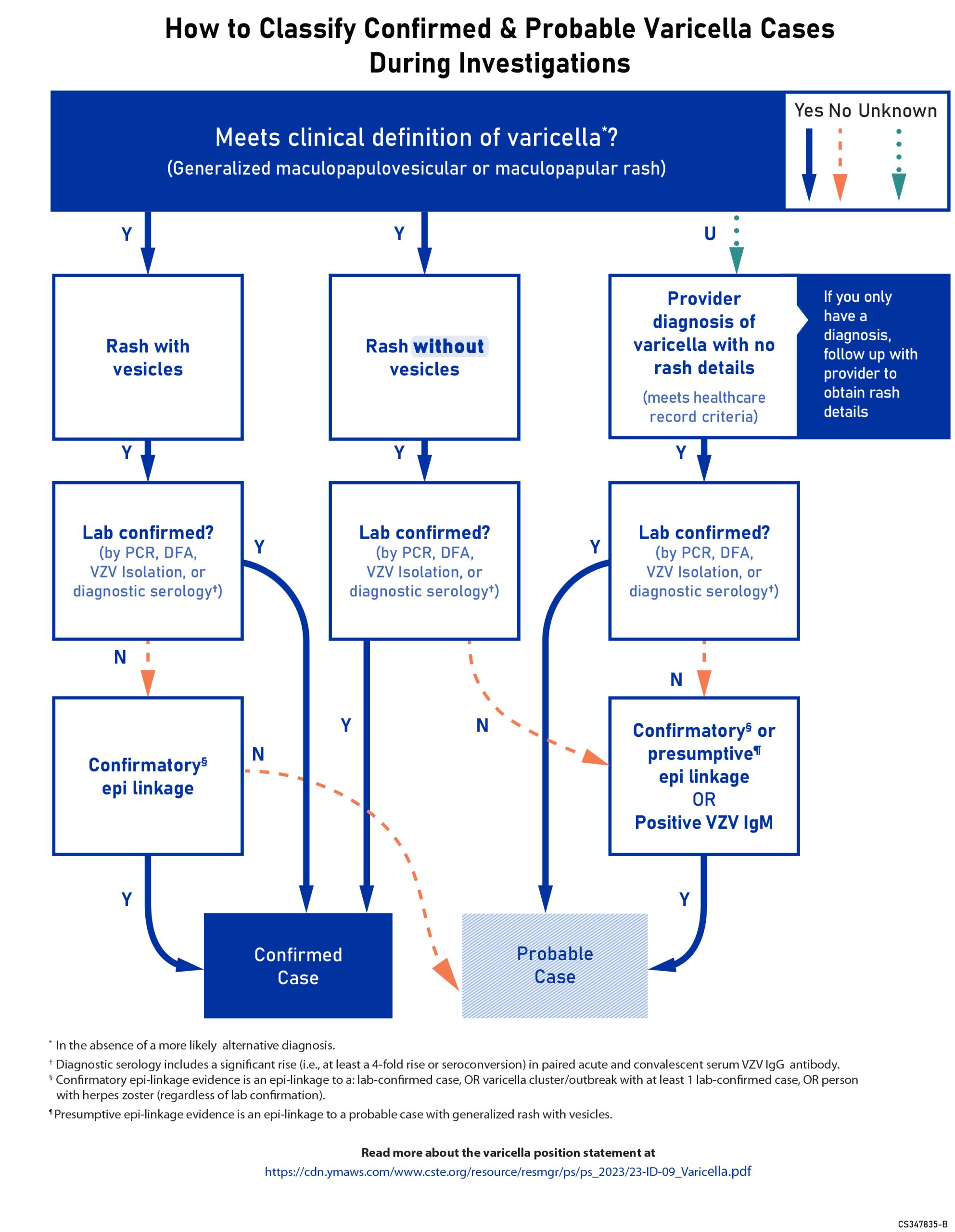At a glance
Learn why varicella (chickenpox) surveillance data are needed, the definitions for varicella clinical cases, how to classify cases as probable or confirmed, and how to report varicella deaths.

Why surveillance data are needed
- Document and monitor the impact of the varicella vaccination program on varicella morbidity and mortality.
- Describe clinical and epidemiological characteristics of varicella cases during the varicella vaccination program.
- Evaluate the effectiveness of chickenpox prevention strategies.
- Evaluate chickenpox vaccine effectiveness under conditions of routine use.
Varicella case reporting
In 2002, the Council of State and Territorial Epidemiologists (CSTE) recommended that states establish case-based surveillance for varicella by 2005. All states were encouraged to conduct ongoing varicella surveillance to monitor vaccine impact on morbidity. States are encouraged to report varicella cases to the National Notifiable Diseases Surveillance System (NNDSS) via the National Electronic Disease Surveillance System (NEDSS).
As of 2020, 39 states have been conducting case-based varicella surveillance. For state-specific reporting requirements, contact the state health department.
State reportable conditions
Varicella case definitions
The following case definitions were approved by CSTE for varicella cases in June 2023 and for varicella deaths in 1998. All case definitions for varicella cases and deaths can also be found on the NNDSS website.
Clinical case definition
In the absence of a more likely alternative diagnosis:
- An acute illness with a generalized rash with vesicles (maculopapulovesicular rash), OR
- An acute illness with a generalized rash without vesicles (maculopapular rash)
Case classification
Refer to the CSTE position statement or follow the flowchart below for the criteria needed to classify a case of varicella.
Varicella deaths
In 1998, CSTE recommended that varicella-related deaths be placed under national surveillance. As of January 1, 1999, varicella-related deaths became nationally notifiable to CDC.
Varicella deaths can be identified through death certificates, which may be available through state vital records systems. In states using electronic records, certificates may be more readily available soon after a person dies. State health departments may also request that local health departments, providers, and hospitals report varicella deaths that occur in their community.
Varicella death investigation worksheet
- CDC. Evolution of varicella surveillance — selected states, 2000-2010. MMWR 2012; 61(32):609-12.
- Lopez AS, Zhang J, Marin M. Epidemiology of Varicella during the 2-Dose Varicella Vaccination Program – United States, 2005-2014. MMWR Morb Mortal Wkly Rep. 2016 Sep 2;65(34):902-5.

